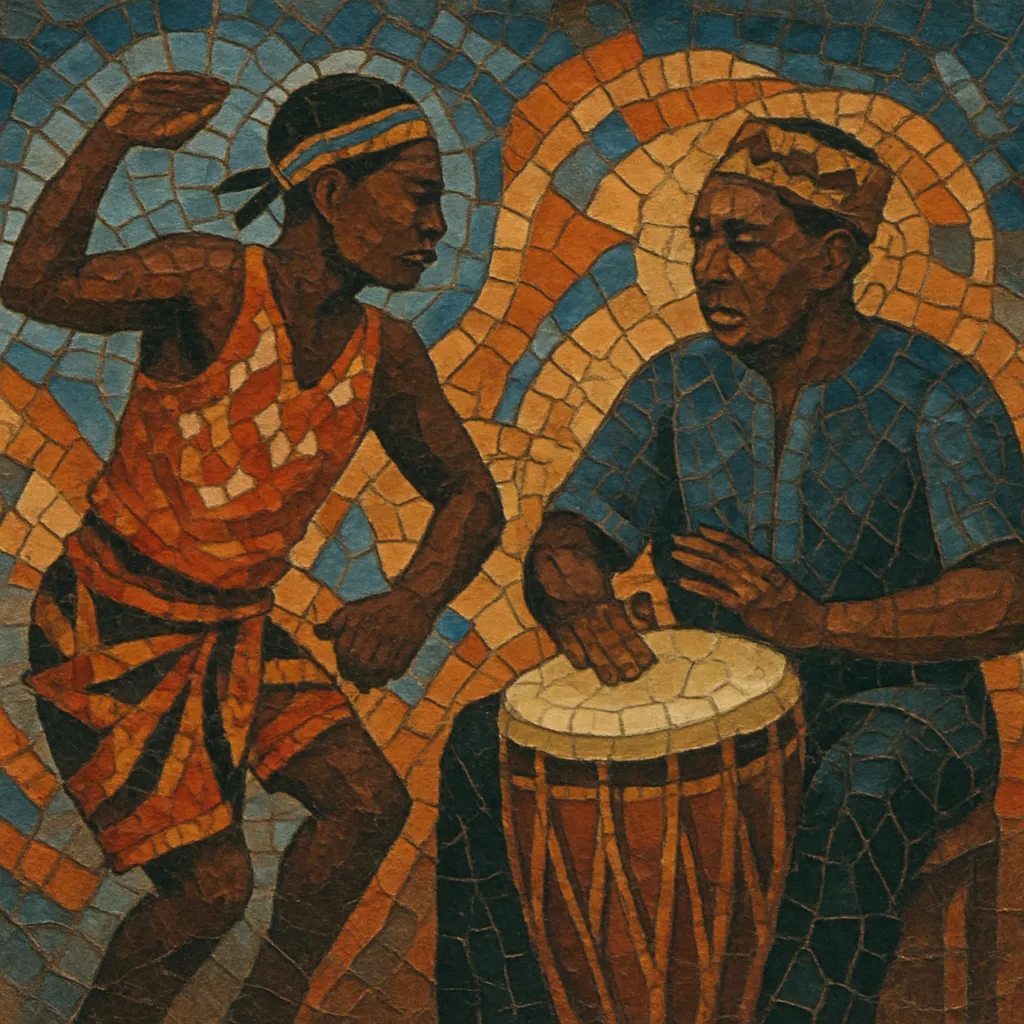Assiko is a dance-music style of the Bassa people of Cameroon that blends older village rhythms with modern guitar-led ensembles. It is marked by a brisk, lilted groove (often felt in 6/8 or a 4/4 with a triplet feel), interlocking hand percussion, and a signature bottle percussion played with metal implements.
Typically, a lead acoustic (or lightly amplified) guitar outlines cyclical riffs, while a simple bass line anchors the harmony. Call-and-response vocals in Bassa or French carry stories of everyday life, humor, social commentary, and moral reflection. The result is an earthy, propulsive music designed for the equally athletic Assiko dance, known for rapid footwork, hip accents, and low center-of-gravity moves.
Assiko took shape in the 1950s among the Bassa communities of Cameroon, where older communal rhythms and songs were adapted to guitar ensembles for social gatherings and dance. The acoustic guitar became a focal point alongside hand percussion and the distinctive bottle percussion, giving Assiko its crisp, metallic rhythmic sheen.
Pioneers such as Jean Bikoko "Aladin" helped codify the style for stage and recording, spreading it from village festivities to the urban circuits of Douala and Yaoundé in the 1960s–1970s. As audiences and venues diversified, Assiko absorbed elements from neighboring Central and West African guitar idioms (notably highlife and Congolese rumba/soukous) while keeping its Bassa rhythmic identity.
From the late 1970s into the 1990s, Assiko coexisted and cross-pollinated with other Cameroonian currents (such as makossa and bikutsi). Guitarists and percussionists moved between bands and sessions, carrying Assiko phrasing, bottle patterns, and song forms into broader popular contexts.
Diaspora communities and touring artists helped present Assiko to world-music stages from the 1990s onward. Today, recordings, festivals, and digital platforms sustain the style. While many performances remain community-rooted, contemporary singer-songwriters and jazz musicians draw on Assiko grooves and guitar figures, ensuring its continued evolution.


